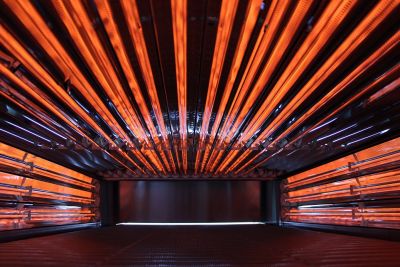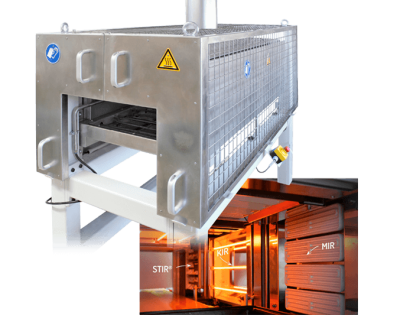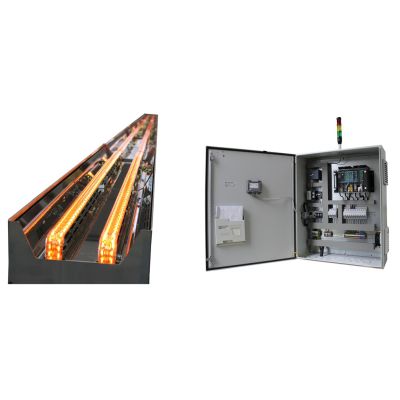Bonding: A principle of material bonding of composite materials
Adhesive bonding is a manufacturing process that is classified as joining. Adhesive bonding is the joining of at least two similar or dissimilar materials by means of organic or inorganic additives. The effect of the adhesive is based on the interaction between adhesion and cohesion (internal strength). A distinction is made between chemically hardening and physically setting adhesives with combined hardening mechanisms. These also include heat-curing adhesives.
In the case of fibre-reinforced plastics, bonding is usually the only suitable principle for joining. Mechanical joining methods can destroy the fibres in places. Adhesives can compensate well for the different expansion coefficients in composite materials.
Curing of 1K and 2K adhesives by means of infrared radiation
Infrared radiation cures thermosetting adhesives efficiently and within seconds. The bonded product can thus be further processed more quickly. IR emitters emit energy in the exact wavelength that the adhesive's functional groups absorb best and which is converted into heat. The emitters can be precisely shaped to the product if only very small areas need to be heated. Infrared radiators transmit heat radiation contactlessly, with high power and very effectively.
What should be considered when bonding composites?
The selection of the appropriate system for bonding composites and activating adhesives depends on the requirements of the application, the infrared-curing material and the desired process parameters. By matching the emission of the infrared emitters with the absorption of the functional groups of the adhesives used, it is possible to better control the curing process while significantly reducing the time and energy required.
Bonding composites with infrared radiation - an overview of the advantages of the joining process
- High heat flux densities, very fast response times
- Contactless and direct heat transfer
- Emission of the emitters matched to the absorption of the adhesives
- Flexible use: heating of large surfaces as well as smaller areas and complex parts possible
- Low energy loss
- High efficiency
- Targeted and reproducible heating
- Simple and safe operation due to defined temperature control
Ingolf Jaeger
Head of Sales
Dipl.-Ing. Mechanical Engineering
E-Mail: i.jaeger@ibt.de
Phone.: +49 (0) 3731 1683-15


